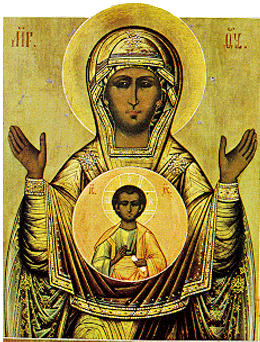Virgen de la O
Virgen de la O
– Answered by Father Johann Roten, S.M.
Q: What does the title, Virgen de la O, signify?
A: The designation "do" or "Virgen de la O" has liturgical origins. It refers to the so called O-antiphons (Vespers) sung during the latter part of Advent (Dec. 17-23), and thus makes this advocation one of expectation of the imminent birth of Jesus (expectacion del parto). She is venerated under this title, for example, in Albacete, Cadiz, Pontevedra Capital, Oviedo, and in Pamplona (here under the title of Santo Andia). Representations show her pregnant:
- with a bulging womb, hand(s) placed on her womb, and specific vestimentary details (special knot in sash, robe bursting at the seams...)
- in representation only with allegorical and symbolic elements accompanying the figure of Mary or part of her garments (robe covered with wheat ears).
- with designation of pregnancy through monograms (for example, IHS, cross, disk of the sun, dove as symbol of the Holy Spirit) on Mary's body.
- as "foetus" type. The unborn child is pictured in a mandorla or circle placed on her breast or womb. Some of these icons correspond to the so called Platytera type.

The four categories here mentioned are not necessarily related to Our Lady of O (known as such almost exclusively in Spain and Portugal), examples of which can be found in categories 1 + 4. However, the type of "Maria Gravida" (the visibly pregnant Mary) is complex and widespread. This type became popular in the Middle Ages but it existed (as Maria Platytera) already in the fifth century. Feminine mysticism contributed much to its dissemination.
There are close connections between "Maria gravida" and the apocalyptic woman and the Immaculata. Further, many scenes of Mary's life show her pregnant: shelter-seeking, visitation, scenes representing the doubting Joseph. Among the most famous representations, we have Jean Bellegambe, The Expectant Mary (1525), Piero della Francesca, Madonna del Parto (ca. 1440/60), Mary Expecting (painted wood panel, Strassburg, 1420), and, not to be forgotten, the representation of Our Lady of Guadalupe.
There exists a custom in Spanish-speaking countries to dress Madonna statues according to the colors of the liturgical seasons, special feast days or according to the color preferences of the donor of the robe. All of this makes it difficult to establish iron-clad rules.
All About Mary includes a variety of content, much of which reflects the expertise, interpretations and opinions of the individual authors and not necessarily of the Marian Library or the University of Dayton. Please share feedback or suggestions with marianlibrary@udayton.edu.
